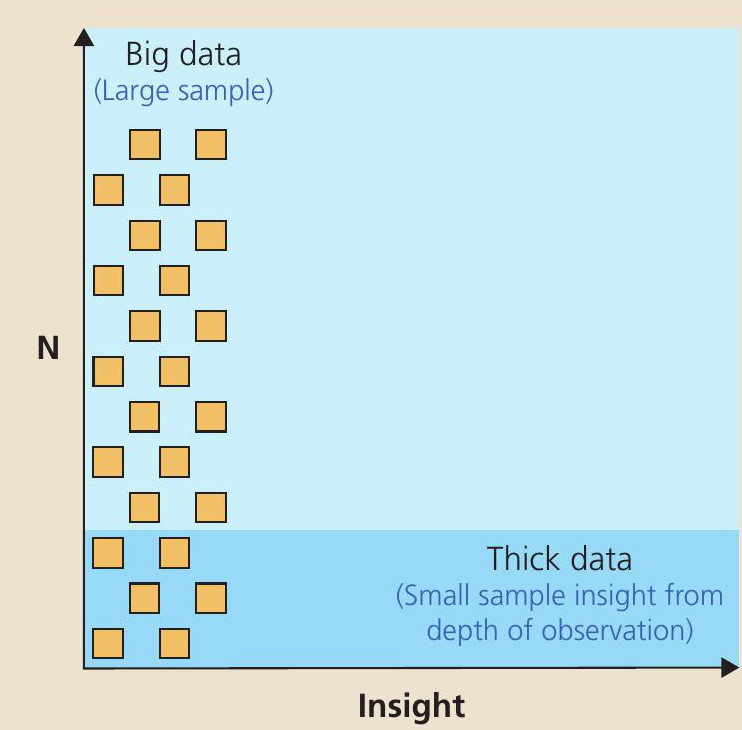
Previous issues of GEOGRAPHY REVIEW have looked at the usefulness of interviews as a primary data collection tool. Interviews offer a more in-depth or intuitive opportunity to find out people’s attitudes regarding a particular local problem, issue or change. These research methodologies are perhaps best thought about as being a ‘directed conversation’ and they have a good deal more flexibility compared to questionnaires. This type of qualitative research may be a critical part of any successful study. Qualitative analysis adds ‘colour’ and further understanding to investigations and subsequent reports. Interview transcripts are among the best qualitative analysis resources available — but you need the right methods to use them successfully.
What is often referred to as ‘big data’ is typically large quantitative data sets. What is sometimes called ‘thick data’ is in-depth qualitative information from often small but focused data sets (see Figure 1). Interviews are thick data, coming from a small sample and providing insights from selected individuals.
Your organisation does not have access to this article.
Sign up today to give your students the edge they need to achieve their best grades with subject expertise
Subscribe




